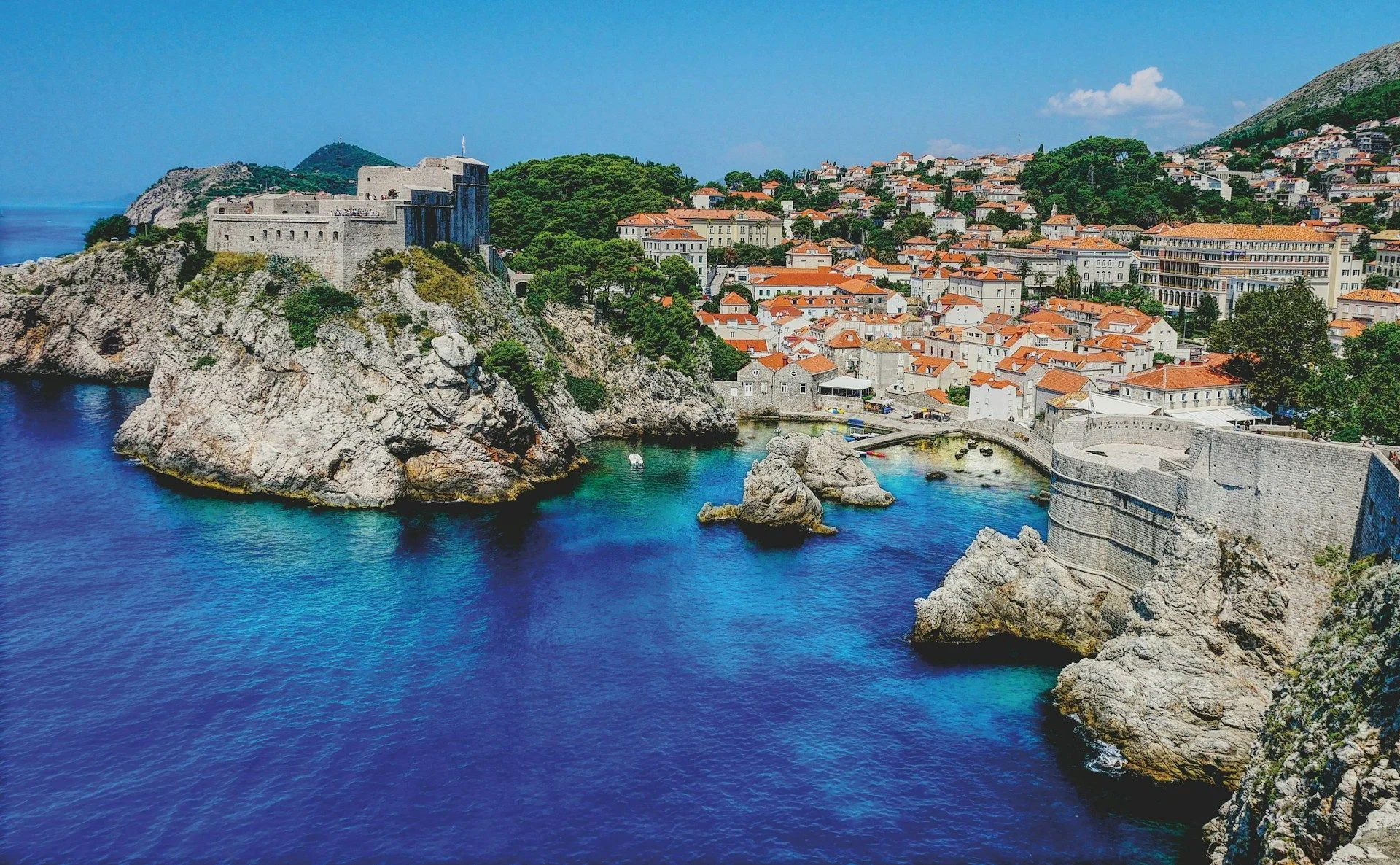Croatia Commercial Property Market – Opportunities for BuyersEuropean lifestyle and steadyinterest in coastal homes

Best offers
in Croatia
Benefits of investment in
Croatia real estate
Strong Demand for Coastal Real Estate
Homes on the Adriatic coast consistently attract interest from European renters and buyers, especially in tourist zones.
EU Membership and Legal Transparency
Property rights, transactions, and taxation are regulated under EU law, ensuring high protection for foreign investors.
Growth of Tourism and Rental Market
Croatia expanding tourism industry boosts returns from short-term rentals and drives steady price appreciation.
Strong Demand for Coastal Real Estate
Homes on the Adriatic coast consistently attract interest from European renters and buyers, especially in tourist zones.
EU Membership and Legal Transparency
Property rights, transactions, and taxation are regulated under EU law, ensuring high protection for foreign investors.
Growth of Tourism and Rental Market
Croatia expanding tourism industry boosts returns from short-term rentals and drives steady price appreciation.

Useful articles
and recommendations from experts
Buy Commercial Property in Croatia: Capitalizing on a Thriving Adriatic Market
Croatia has steadily emerged as one of Europe’s most attractive destinations for real estate investment, combining breathtaking Adriatic coastlines, a growing economy, and a robust tourism sector. From centuries-old port towns to modern urban centers, the country’s commercial property market caters to a variety of investor preferences and strategies. For international buyers looking to buy commercial property in Croatia, the nation offers unique advantages—ranging from EU membership benefits to a strong hospitality sector—that bolster its long-term appeal.
Tourism remains a driving force behind Croatia’s economic success, with over 20 million foreign visitors each year seeking sun, culture, and culinary delights along the Adriatic coast. This heavy influx of travelers fuels demand for retail spaces, hotels, and restaurants, creating a broad scope for investors. Beyond tourism, Croatia’s integration into the European Union has opened doors for cross-border trade, enabled infrastructure improvements, and streamlined regulations related to foreign property ownership. These developments—coupled with ongoing modernization—significantly reduce barriers to entry for potential buyers.
In terms of business climate, Croatia’s stable democratic institutions, strategic geographical position, and shared Mediterranean heritage all contribute to making it an emerging powerhouse for commercial ventures. While coastal cities like Split and Dubrovnik capture headlines with their tourism-driven economies, the capital city of Zagreb also attracts a growing pool of multinational corporations, technology startups, and regional headquarters. These complementary dynamics—coastal hospitality and urban business expansion—underscore why Croatia’s commercial real estate landscape continues to pique global interest.
Invest in Croatian Real Estate: Key Drivers and Opportunities
Taking the decision to invest in Croatian real estate demands a holistic understanding of the market’s primary catalysts. While Croatia’s Adriatic coastline often dominates investor conversations, a closer look reveals that both coastal and inland regions have a significant role to play in the country’s long-term economic narrative.
1. Tourism and Hospitality
The Adriatic coast tourism boom is more than a short-term trend; it’s become a cornerstone of Croatia’s national economy. Historic port cities, UNESCO World Heritage sites, and pristine beaches lure travelers from Europe and beyond. As a result, owners of hotels, hostels, restaurants, and retail facilities often experience high foot traffic and occupancy rates, especially during peak seasons. In addition, many coastal towns are diversifying their tourist offerings—expanding into the luxury market or introducing eco-tourism and cultural activities to extend the season.
2. EU Membership Benefits
Since joining the European Union in 2013, Croatia has reaped EU membership benefits like improved funding for infrastructure projects, better access to foreign capital, and increased transparency in property laws. Investors find comfort in standardized regulations that align closely with broader EU frameworks. This alignment has also stimulated the modernization of the banking sector, making mortgage and financing options more accessible and competitive.
3. Infrastructure Development
Croatia’s strategic location bridging Central and Southeast Europe has spurred the construction of new highways, rail systems, and upgraded airports. These infrastructural enhancements reduce transit times for goods and services, boosting the country’s logistical appeal. Cities not traditionally viewed as commercial hotspots—such as Osijek or Rijeka—are seeing renewed interest because improved connectivity makes them ripe for broader economic development.
4. Commercial Diversification
Although tourism is a significant economic driver, Croatia is investing in other sectors too—like information technology, manufacturing, and renewable energy. This diversification stabilizes property demand across multiple commercial asset classes, from office complexes to industrial parks. It also reduces overreliance on seasonal tourism income, offering investors balanced opportunities for steady, year-round returns.
In essence, while the promise of attractive coastal investment opportunities is undeniable, Croatia’s urban centers and hinterland can also deliver substantial gains. A strategic approach often involves blending coastal hospitality assets with city-based offices or logistics properties to capture growth from multiple angles.
Commercial Real Estate in Zagreb: The Capital’s Economic Pull
While the coastline garners global fame, commercial real estate for sale in Zagreb equally deserves attention. With a population of around 800,000 in the city proper, Zagreb stands as Croatia’s political, cultural, and economic core. Major international corporations and regional startups alike are drawn to the capital’s advanced infrastructure, skilled workforce, and relatively affordable operating costs compared to Western European capitals.
1. Business Districts and Office Space
Lower Town (Donji Grad) and districts like Novi Zagreb feature modern office buildings, coworking spaces, and corporate headquarters. Tech firms, financial institutions, and government agencies drive steady demand for well-located properties. Investors seeking stable rental yields often target these areas, where tenants typically sign multi-year leases.
2. Retail and Mixed-Use Developments
Zagreb’s expanding consumer market has led to a rise in shopping centers and mixed-use complexes. These developments combine retail stores, cinemas, and residential units, creating vibrant “live-work-play” environments. For investors, mixed-use projects can be an effective hedge against market fluctuations, as multiple revenue streams—like retail rentals, entertainment facilities, and parking—distribute risk.
3. Cultural and Tourism Appeal
While not a typical “resort city,” Zagreb draws a growing number of international visitors through year-round festivals, Christmas markets, and historical attractions like the medieval Upper Town (Gornji Grad). Commercial properties positioned in tourist-heavy neighborhoods—boutique hotels, hostels, or restaurants—can thrive by tapping into an ever-expanding cultural tourism scene.
4. Government Support
Croatian authorities, mindful of the capital’s importance, often focus resources on developing Zagreb’s infrastructure and public services. Continued improvements to roads, public transit, and event facilities further enhance the city’s economic standing, encouraging both domestic and foreign businesses to establish or expand operations.
By scouting the city’s diverse neighborhoods, investors can find opportunities that align with their goals, whether it’s short-term yield or long-term capital growth. Zagreb’s forward-looking policies and evolving urban landscape mark it as a key player in the Croatia property market outlook—particularly for commercial projects aiming to capture stable, all-season demand.
Office Space in Split: Harnessing Adriatic Coast Tourism
Among Croatia’s coastal gems, Split stands out as both a cultural hub and a thriving business center. Known for its Roman-era Diocletian’s Palace and lively waterfront promenade (Riva), the city offers a year-round population of around 200,000 residents and welcomes millions of tourists annually. For those looking to expand beyond the hospitality sector, office space in Split can be a strategic move—especially if you want to tap into a city that blends tourism, commerce, and local enterprise.
1. Rapid Urban Development
Split’s economy has diversified over the past decade, with an uptick in technology startups, maritime businesses, and creative industries. The city’s university system and a growing pool of English-proficient graduates support a flourishing IT and entrepreneurial ecosystem. Consequently, newly built office complexes or renovated historical buildings in the city center often attract a variety of tenants seeking modern facilities.
2. Strong Hospitality Sector
Although office space might appear secondary to Split’s tourism-driven hotels, restaurants, and vacation rentals, the strong hospitality sector indirectly supports business ventures that cater to an international clientele. Tour operators, marketing agencies, event planners, and travel tech firms frequently set up in Split to be close to the action. This synergy fosters a consistent demand for office space equipped with high-speed internet, meeting rooms, and flexible lease terms.
3. Tourist Infrastructure
Split’s airport is one of the busiest in Croatia, offering regular flights to numerous European cities. Fast ferry connections to nearby islands like Brač and Hvar further enhance the city’s appeal as a base for regional operations. Such accessibility encourages multinational firms with a Mediterranean or Adriatic focus to pick Split for branch offices, ensuring a year-round presence, not just a seasonal one.
4. Coastal Lifestyle
Attracting top talent often goes beyond just providing competitive salaries—it also involves offering an appealing environment. Split’s scenic coastline, moderate climate, and recreational activities (e.g., sailing, hiking, watersports) make it attractive for professionals seeking a balanced lifestyle. As more employees work remotely or opt for flexible arrangements, companies may consider establishing offices in Split to retain and lure skilled workers, boosting the overall office property market.
Whether you intend to develop new commercial buildings, refurbish existing structures, or hold property for rental income, Split’s combination of tourism, rising business ventures, and coastal allure presents a compelling proposition for investors keen on tapping Croatia’s evolving real estate market.
Croatia Property Market: Balancing Coastal and Urban Growth
Forecasting the Croatia property market outlook requires weighing two primary forces: the magnetic pull of coastal regions reliant on tourism and the steady industrial and commercial expansion of the country’s urban centers. Both spheres carry distinct advantages and potential risks, yet a diversified approach can help investors mitigate vulnerabilities.
• Seasonal vs. Year-Round Returns: Coastal properties often yield lucrative gains during peak tourist season, but off-season dips can affect cash flow if the property relies solely on holiday travelers. Conversely, Zagreb and other inland cities offer more stable, year-round commercial occupancy, appealing to firms and businesses that require continuous operations.
• Infrastructure Upgrades: Ongoing projects—such as highway expansions, regional airport improvements, and digital connectivity initiatives—streamline the flow of goods and people across the country. Infrastructure enhancements benefit the entire real estate landscape, but especially regions that were once considered peripheral or underserved.
• Policy and Regulation: As part of the EU, Croatia must adhere to standards that promote transparency and investor protection. However, local regulations on zoning, building permits, and environmental considerations can still vary. Partnering with reputable law firms and real estate agencies helps navigate these nuances smoothly.
• Future Growth Sectors: While tourism will remain a cornerstone, Croatia’s evolution toward technology, manufacturing, and sustainable energy diversifies economic drivers. Cities like Osijek or Rijeka may see upticks in commercial activity, presenting emerging opportunities for forward-thinking investors.
A measured investment strategy in Croatia might combine a hospitality-focused asset in a coastal hot spot (capitalizing on Adriatic coast tourism) with a stable commercial or retail property in the capital. This blend ensures exposure to high-reward segments while buffering against seasonal shifts. As more international firms enter the Croatian market, the breadth and sophistication of commercial real estate will likely expand—creating a positive feedback loop that reinforces Croatia’s standing as a premium investment destination in Southeast Europe.
In conclusion, whether your plan is to buy commercial property in Croatia for hospitality ventures, invest in Croatian real estate in a vibrant capital, or secure office space in Split to benefit from coastal growth, the country’s property market holds significant promise. The mixture of attractive coastal investment opportunities, robust tourism, and urban expansion anchors the Croatia property market outlook firmly in positive territory. By staying attentive to regional developments, infrastructure upgrades, and regulatory frameworks, international buyers can position themselves at the forefront of Croatia’s commercial real estate surge—reaping both financial and strategic rewards in a nation celebrated for its idyllic shores and dynamic, evolving cities.
